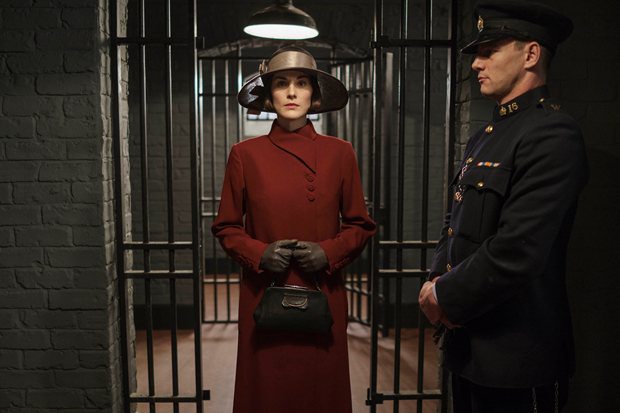I’m new to Sharpe’s world. So new in fact that I thought this was the first Sharpe movie. IMDB laughed and said, “Silly child, this is the 15th Sharpe movie.” For those of you who thought Sean Bean sat around between Patriot Games and Lord of the Rings, you are sadly mistaken. And when I say you, I mean me. He-of-the-Awesome-Name was starring in fourteen Sharpes. (And I love that they are all named “Sharpe’s something”. Like Sharpe’s Rifle and Sharpe’s Battle. And at sixteen movies with next week’s Sharpe’s Peril, they’re going to start running out of manly, adventurey words. Can’t wait for Sharpe’s Holiday!)
So Sharpe’s Challenge can really only be described correctly using the word “swashbuckling”. There are sword fights and damsels in distress and cannons and rifles and drinking and femme fatales and traitors and other stuff my dad loves. (Mental note: ask Dad if he’s read the novels by Bernard Cornwell and if not, birthday gift done.) Challenge opens with the traitorous Dodd slaughtering the entire British army unit in an Indian camp. Dodd left no one alive…or did he? Yep, Sharpe was there and witnessed the whole thing. While playing dead. Dodd is played by Toby Stephens aka Maggie Smith’s son. I have only seen Stephens play bad guys like the Bond villain in Die Another Day. And because of his skill at being smarmy and ambitious and evil, he creeps me out. But I’m sure he’s lovely in person.
Years after that massacre, Sharpe is back in India to find a friend who will soon become his Irish sidekick, Harper. Then the two have to rescue General Burroughs’ daughter who was kidnapped by…wait for it…Dodd! Dodd “gifted” her to the evil Raja. Dodd is in cahoots with the Raja’s Regent played by Padma Laksmi. Yes, all you Top Chef fans: Padma is playing a conniving ex-concubine. There’s a great scene where Dodd’s men cut off a British lieutenent’s head and I immediately thought, “Utensils down! Hands up!” I’m a Top Chef nerd.
Meanwhile, Sharpe is having to contend with the British troops that aren’t stepping up fast enough to attack the Raja. Specifically, General Simmerson. Simmerson is the character that hates Sharpe for some past reason or perhaps no reason at all. Sharpe interrupts Simmerson while he’s getting his hair cut. Simmerson says, “What fresh madness is this?” (I’m stealing that line.) And Sharpe says he’s going to rescue the daughter. Simmerson says, “I don’t mind if you do die…” Sharpe: “If that’s permission…” Simmerson: “Go and die.” Not quite “good luck”.
As this was set in British-occupied India, Challenge did a good job of balancing Brits and Indians being both good guys and bad guys. Although both main good Indians, the cavalry leader and the Raja’s sister, said something along the line of “I’m helping you but I really don’t want you here”. But the cavalry guy apologizes to Sharpe after the final battle and he’s dying. Perhaps he expired before saying, “But really consider leaving our country please.”
One negative of Challenge: the British officer Bickerstaff who was so over the top and Dickensian in his villainy that I thought he was going to break out into “Master of the House”.
What did I learn from Sharpe’s Challenge? How to use “parlay” and “brigands” in a sentence. Evil conspirators’ romances never last. In the middle of battle, respond to your inferiors by saying, “Damnit man. I will not have my story interrupted.”


